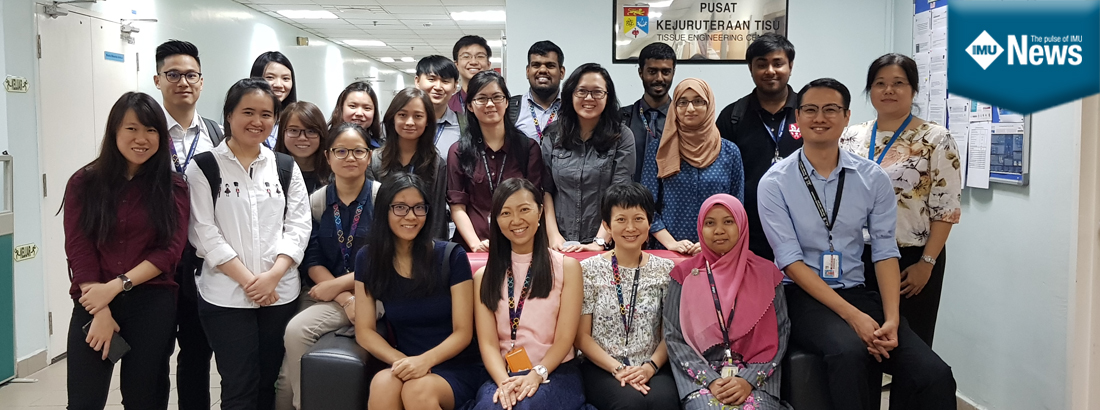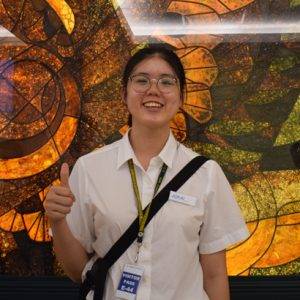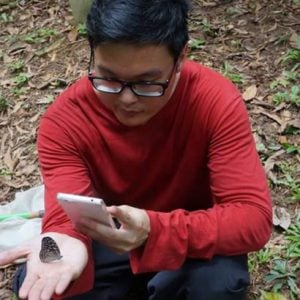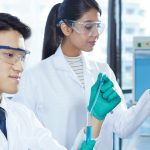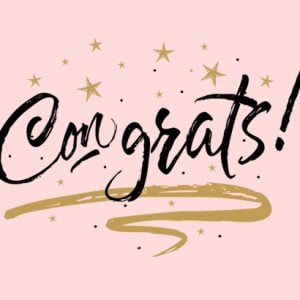On 26 April 2018, a total of 17 IMU students undergoing the fourth semester of their Medical Biotechnology programme visited the tissue engineering lab at Hospital Universiti Kebangsaan Malaysia (HUKM). Being a student of this programme, I was a part of this visit. If I were to stick with candour, I personally felt that this visit was just going to be another one of those rather bland ones which do not really have much going on and at the end of the day it is just going to be another day ticked off the calendar.
| A Lecture on Tissue Engineering |
|---|
| Upon reaching HUKM, we made our way to the laboratory and were greeted by Dr Daniel. After being acquainted with him, we were given a lecture regarding tissue engineering as a whole and the history surrounding the growth of the tissue engineering field in Malaysia. The lecture became interesting when the focus shifted to the real thing which was tissue engineering. The aspects covered in this part of the lecture were the definition, steps, precautions and applications of tissue engineering. Based on what my peer, Choy Sze Mun have picked up, tissue engineering can be described as a process to develop tissue in vitro for the purpose of replacing of repairing damaged tissue. We also learned a dose of immunology when Dr Daniel explained the basis behind the reason why almost all tissue cultures are essentially autografts. The lecture then continued with the story of a four-year-old girl who had suffered burns to about 34% of her skin. She had MyDerm™ used on her which ultimately saved her life. The lecture ended with this story which would stand as a testament of the efficacy of their research. |
| People often lament that Malaysia does not have many significant achievements in the scientific field. This laboratory could probably make these individuals reconsider their line of thought as they have successfully made MyDerm™. It is basically an autologous engineered tissue which is meant to repair full thickness skin loss. This skin substitute is permanent and it actually promotes healing of wounds which are severe. The product is rather renowned as it had been listed in the Malaysian Book of Records as Malaysia’s first tissue engineered human skin in the year 2016. In 2014, it had also bagged the Gold Medal Award for ‘Innovation of Bioengineered Human Skin using HPD’ at the 32nd International Exhibition of Invention, New Technique and Products of Geneva. I must say that I am simply amazed by the fact that we are globally recognised. I am positive that the progress would be phenomenal in the future. Awards won by MyDerm™ |
|---|
| Tour of Labs |
|---|
| The visit continued with a tour of the labs which included the production laboratory, research laboratory and the Biobubble Class 100. As noted by Yong Kai John, the production laboratory was GMP certified which acts as a form of quality assurance. Mr Fikri of HUKM explained that the laboratory had to have a sterile condition at all times and many measures were taken to ensure this. I never fully understand the costs incurred to maintain a lab but after the session with Dr Fikri, I learned that a whopping RM 30,000 to RM 40,000 is needed a month to maintain it! After viewing of the production lab, we were led to the research lab. Over there, we learned about the techniques such as Western Blotting, electrospinning and gel electrophoresis. The viewing of the Biobubble Class 100 was the last part of the visit. As noted by my cohort mate, Stephanie, the purpose of the place was to house immunocompromised animals which are integral to certain studies done. |
I feel that this visit was a fruitful one for all of us from MB1/16. It taught us the applications of the things that we have learnt in the Medical Biotechnology programme. I personally felt rather inspired looking at all the work going on in the biotechnology field in Malaysia and also perhaps the world. We have come a long way from being hunter-gatherers to users of tissue cultures to grow back lost skin and potentially even body parts in the future. All in all, I am glad that my initial perception of the visit was flawed and I do hope that more visits such as this one would be organized in the future. Written by: Avinash a/l Rames Photo credits: Dr Wong Chiew Yen




